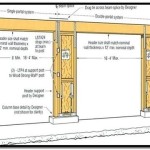How Can I Remove Old Oil Stains From My Garage Floor?
Oil stains on a garage floor are a common problem, often resulting from car maintenance, spills, or leaks. While fresh stains may be easier to remove, old oil stains can become stubborn and unsightly. Fortunately, with the right approach and cleaning materials, you can effectively remove old oil stains from your garage floor. This article will provide a comprehensive guide to tackling this common challenge, offering practical tips and solutions to restore your garage floor to its former glory.
1. Assessing the Stain and Choosing the Right Cleaning Method
The first step involves assessing the age, type of oil, and the material of your garage floor. Understanding these factors will guide your choice of cleaning methods and materials.
Age of the Stain: Newer stains are generally easier to remove than old, deeply embedded stains. For recent spills, a simple cleaning solution may suffice. However, older stains might require more intense cleaning methods.
Type of Oil: The specific type of oil can affect the cleaning process. For instance, motor oil, brake fluid, and transmission fluid have different chemical compositions and may require specific cleaning agents.
Garage Floor Material: The material of your garage floor will dictate which cleaning methods are suitable. For example, concrete floors can withstand stronger cleaning agents than delicate materials like epoxy or painted floors.
2. Preparing the Garage Floor for Cleaning
Before starting the cleaning process, it's crucial to prepare the garage floor by removing any loose debris and dirt. This will ensure that the cleaning solution can effectively penetrate the stain and remove the oil. You can use a broom, dustpan, or a vacuum cleaner to sweep away debris. For stubborn dirt or grime, you might consider using a scrub brush and a mild detergent solution.
3. Using the Right Cleaning Agents
The type of oil, the age of the stain, and the material of your garage floor will determine the appropriate cleaning agents. Here are some commonly used cleaning agents for oil stains:
Commercial Degreasers: These are readily available at hardware stores and are designed to effectively remove oil and grease. Be sure to choose a degreaser specifically formulated for concrete or the material of your garage floor.
Baking Soda: Baking soda is a natural abrasive that can help break down oil stains. Combine baking soda with a small amount of water to create a paste. Apply the paste to the stain and let it sit for several hours. Rinse with water and repeat if necessary.
Cat Litter: This method is effective for absorbing fresh oil spills. Sprinkle cat litter onto the spill and let it sit for several hours. Once the litter has absorbed most of the oil, sweep it up, and dispose of it properly.
Dish Soap: A small amount of dish soap mixed with water can be effective for removing fresh oil stains. Apply the solution to the stain and scrub gently with a brush. Rinse well with water.
4. Applying Cleaning Solutions and Scrubbing Techniques
Once you have chosen your cleaning agent, it's time to apply it to the stain. You can use a sponge, a brush, or a cloth to apply the solution. For tough stains, you may need to scrub the stain vigorously.
For Commercial Degreasers: Follow the instructions provided on the product label. Ensure adequate ventilation while using these products, as they can release strong fumes.
For Baking Soda Paste: Apply the paste to the stain and let it sit for several hours. Then, scrub the stain with a brush and rinse with water.
For Cat Litter: Sprinkle cat litter onto the spill and let it sit for several hours. Then, sweep up the litter and dispose of it properly.
For Dish Soap: Apply the solution to the stain and scrub gently with a brush. Rinse well with water.
5. Rinsing and Drying the Garage Floor
After applying the cleaning solution, it's important to rinse the garage floor thoroughly with water. This will remove any residue from the cleaning agent and helps prevent further staining. Use a hose or a bucket of water to rinse the floor. For deep cleaning, you can use a wet vacuum cleaner to remove excess water.
Once the floor is rinsed, allow it to dry completely. This may take some time, particularly if the floor is wet. You can speed up the drying process by opening windows and doors to improve ventilation.
6. Preventing Future Oil Stains
After successfully removing old oil stains from your garage floor, consider taking steps to prevent future stains. Here are some preventive measures you can implement:
Use a Drip Pan: Place a drip pan under your car to catch any oil leaks. This will prevent spills from reaching the garage floor.
Store Oil Products Carefully: Store oil, gasoline, and other flammable liquids in sealed containers and in a designated area away from your vehicle and the garage floor.
Clean Up Spills Immediately: If you do spill oil, clean it up immediately. Fresh spills are much easier to remove than old stains.
Apply a Sealer: Apply a sealant to your concrete floor to create a barrier against oil stains. This will help prevent oil from penetrating the concrete and make future cleaning easier.

How To Remove Old Oil Stains From Garage Floor Flow Wall

How To Remove Oil Stains From Driveway In 5 Steps Prosoco

How To Remove An Oil Stain From Concrete

Tips To Remove Oil Stains On Your Garage Floor

How To Remove Old Oil Stains From Garage Floor Flow Wall

How To Remove Oil Stains From Driveway In 5 Steps Prosoco

Garage Floor Oil Stain Removal Oilsorb Kittylitter Li Tiktok

How To Remove Oil Stains From Your Garage Floor All Floors

How To Remove Oil Stains From Concrete

How To Remove Oil Stains From Concrete Craftsman Floors Polished
Related Posts








